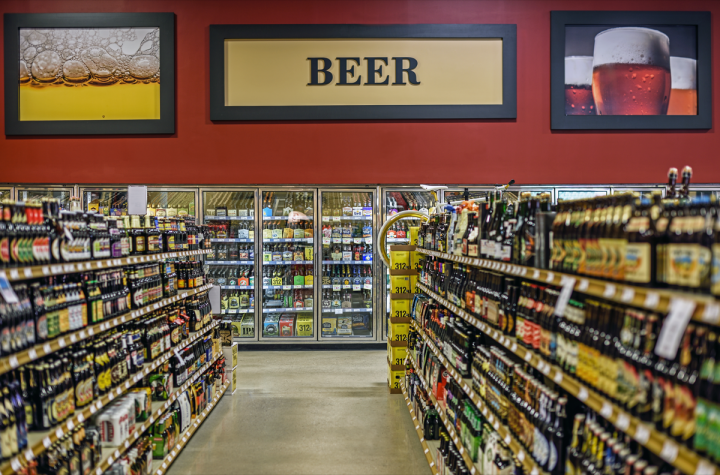
The explosion in craft beer sales has created new complexities for retailers, including effective shelf-management of craft brews and other high-end beers. Although there isn’t only one way to set better beer shelves, shop owners are putting enormous effort into maximizing the opportunity. “The increased variety of craft styles and brands makes merchandising more complex,” notes George Ward, national director of off-premise accounts for Boston Beer Co. “Ultimately, retailers should focus on the visual representation of the entire shelf set to help guide a consumer’s decision.”
Vikas Satyal, senior director for category development at Heineken USA, says, “Retailers are struggling to stay ahead of the trends and are instead reacting to what’s going on. They’re adding a lot of craft and flavored malt SKUs, which is good for the category and the shopper for the short-term, but it can increase operational costs and reduce shelf efficiency in the long-term.”
Executives at Constellation Brands believe that future trends need to be incorporated into today’s beer shelf-set plans. “In the past, beer shelf-sets were based on history,” explains Bruce Jacobson, COO at Constellation’s beer division. With consumers increasingly gravitating to high-ticket and high-margin beers, however, that approach could leave some shelf plans lacking. Constellation predicts that shipments of high-end beer ($25 a case and higher) will increase at least 4 percent in the next three years, while low-end beer will decline at least 2 percent, and Jacobson says merchants should plan accordingly. “Today, retailers need to think ahead,” he says. The company’s recently launched Return on Space Investment (ROSI) shelf-management program forecasts beer trends so that today’s “rapidly expanding brands receive more space,” and the plan remains relevant a year after a shelf reset, Jacobson notes.

Progressive retailers are already setting beer shelves to optimize this opportunity, though their approaches may differ. At West Sacramento, California–based grocery chain Raley’s, coolers lead with imported beers, followed by flavored malt beverages and ciders, craft brews, premium domestics, and sub-premiums. Imports like Corona Extra and Heineken are “some of our biggest-volume brands,” explains Anthony Dyer, category manager for beer and spirits at the 135-unit chain. Placing craft beer in the middle of the flow helps highlight the selection, he says. “We want to make the statement that we offer a wide selection of craft beers,” Dyer adds. Raley’s stores offer between 200 and 500 beer SKUs, retailing from $6.99 to $15.99 a six-pack.
Green’s Discount Beverage, which has six locations in South Carolina and Georgia, takes a similar approach to its cold boxes. According to senior beer buyer Adam Tolsma, the stores’ beer coolers lead with crafts in the flow, followed by imports, premium and sub-premium brews. “Top-selling brands get the best block of space,” says Tolsma, noting that craft brews account for at least half of the chain’s beer sales. The stores stock more than 1,000 beer SKUs, with crafts typically priced at $8.99 a six-pack and above.
Chicago-based Binny’s, which has 35 locations, generally leads its cold box flow with budget beers, followed by premiums, “gateway” crafts like Blue Moon, crafts, imports and flavored malts, according to craft beer and spirits buyer Patrick Brophy. “It drives some wholesalers nuts, but we believe it makes sense to our customers as it’s largely a price flow,” Brophy explains, noting that consistency in organization is key, even if selection varies by store. “We have many customers who shop at numerous stores, and our job is to make it easy for them.” Binny’s stocks about 3,300 beer SKUs, priced from $7.99 to $12.99 a six-pack.
Beer marketers agree that while managing shelf-sets has become more complex, the solution is in keeping things simple. “Call out and highlight where the high-end beers are,” advises Boston Beer’s Ward. “Place craft and imports early in the traffic flow to encourage drinkers to shop for better beers. And merchandise the craft and import segments by brand, not style.”